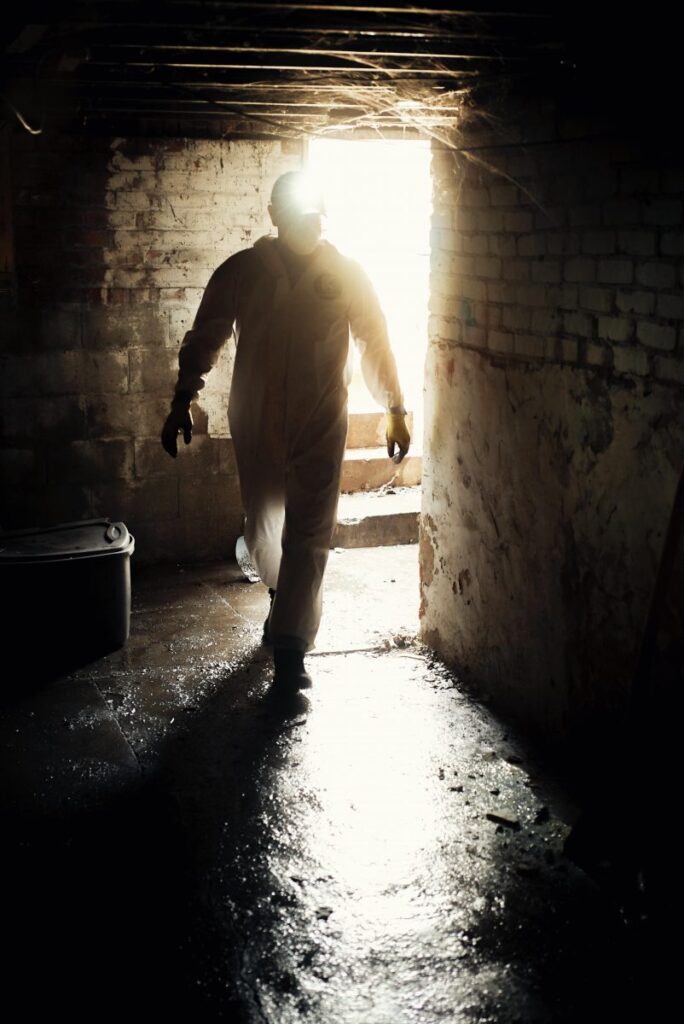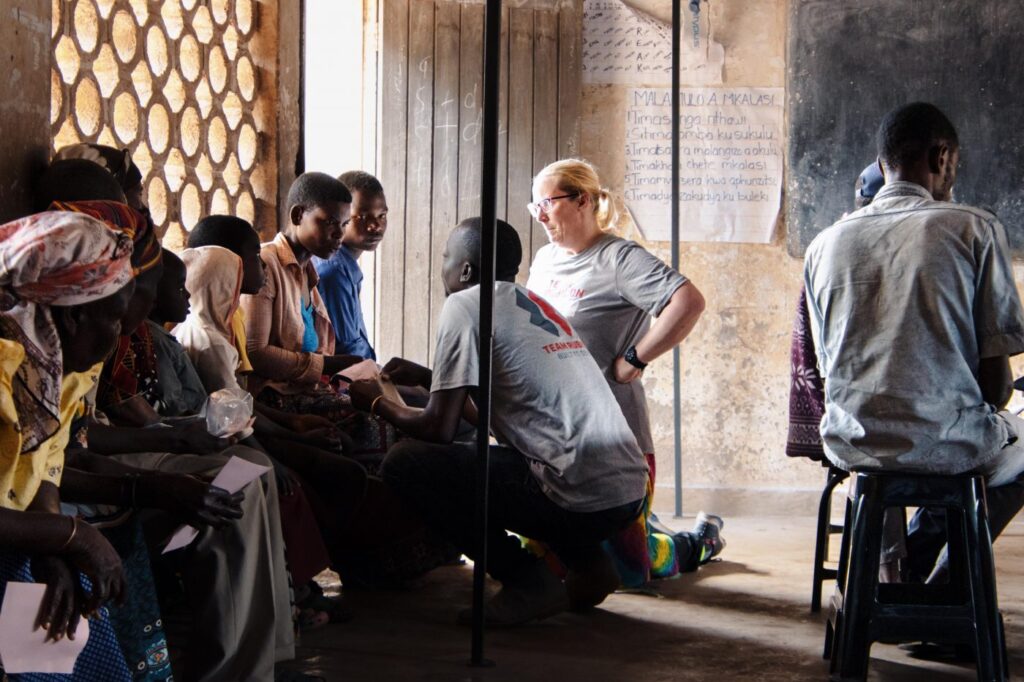While some disasters, including many hurricanes, wildfires, and floods, are widely covered in the media and receive a lot of attention—and, as a result, aid—others are often overlooked. These are known as Low-Attention Disasters, or LADs.
However, just because LADs are not in the public eye does not mean they are not important. These disasters can have significant impacts on the communities and environments they affect. Furthermore, the lack of attention given to LADs can also lead to a lack of resources and support for those impacted. Without public awareness or government response, communities affected by LADs may struggle to recover and rebuild.
Coming to Grips with Low-Attention Disasters
Despite the significant harm they may have caused to the communities and people they hit, LADs are natural disasters that receive little media coverage or public attention, may generate limited responses from NGOs and aid organizations, and domestically, may even not garner an emergency or disaster declaration.
While Low-Attention Disasters sometimes comprise slow-onset events—such as droughts or erosion—making them less dramatic or newsworthy, many are dramatic events that appear in the news briefly, only to be usurped by other disasters or events.

And sometimes a disaster starts big and newsworthy—think Hurricane Fiona—but suddenly disappears from the public eye. At other times, disasters become LADs when they land in an area still trying to recover from previous disasters. Such seemingly small-scale disasters pack an especially big punch.
Three Surprising Recent Low-Attention Disasters
A LAD in the Show Me State
In late July of 2022, several rounds of thunderstorms produced rainfall at rates exceeding 2 inches per hour in Missouri. Over just an 8-hour timespan, more than 11 inches of rain dumped on communities west of St. Louis, while more than 8 inches fell on the city itself, breaking the previous 1915 record of 6.85 inches from the remnants of the Galveston 1915 Hurricane.
The disaster had major impacts. According to a preliminary report by FEMA, 1,661 homes in St. Charles and St. Louis Counties were impacted by the flooding, but only 4% had flood insurance. And, more than 11% of the households were above the poverty threshold, and more than two-thirds of the residents were over age 65.
And yet, that flooding is a disaster few have heard about.
Two Hurricanes, One LAD
When Hurricane Fiona hit Puerto Rico, which was still recovering from 2017s Hurricane Maria on September 18, 2022, the disaster quickly became a LAD. That’s despite the fact that, during the hurricane, some places on the island saw more than 30 inches of rain; after the hurricane, nearly 1 million people were without power, and hundreds of thousands were without water service. More than a year later, Puerto Ricans are still working to recover from this hurricane.
So how did such a massive disaster become a LAD? Hurricane Ian. Within days of Fiona’s landfall, Hurricane Ian was spinning up and strengthening off the coast of Florida. By the time Hurricane Ian made its way up the Gulf of Mexico and came ashore on September 28—10 days after Fiona came ashore—Puerto Rico had been virtually wiped from the news cycle.
Motown Floods and No One Notices
Throughout the summer of 2021, Detroit sustained multiple flooding events that caused severe damage to structures and roadways. And, when 6 inches of rain fell in less than 24 hours, the city’s stormwater system was overwhelmed and a state of emergency was declared in the area. That rainfall was followed by more in the days and weeks that followed. Homes and basements that flooded once reflooded with the repeated onslaughts. Some basements across the area had an estimated 3 to 6 feet of water in them during each of the flooding events.

Tens of thousands of homes flooded in Detroit in 2021, and many of those residents are still fighting to recover. In total, more than 67,000 residents filed claims with FEMA, though more than 22,000 of those were denied. For the 38,826 residents who did receive monetary assistance from FEMA, the average compensation was $3,291 per resident.
When Disasters are Local
Another factor that contributes to the lack of attention given to LADs is their often localized nature. While large-scale disasters, such as hurricanes, can affect entire regions, LADs may only impact a specific community or ecosystem. This limited scope can make it difficult for these disasters to capture the attention of national or international media outlets.
Take, for example, in March of 2019, when a winter storm crossed the Rockies and went through “bombogenesis,” eventually bringing winds of over 100 mph in some places, blizzard conditions, and record rains from Colorado through Michigan.
When seasonal snowpack, rising temperatures, and ice-jammed rivers combined, the conditions were perfect for excessive runoff and historic flooding. Nebraska was especially hard hit by Winter Storm Ulmer, with 74 cities, 65 counties, and four tribal areas all initially declaring a state of emergency. An estimated 90,000 people were told to evacuate.
Ultimately, flooding in Nebraska affected more than 7,000 homes, with damage estimated at $2.7 billion.
Slipping the Declaration: Why Some Disasters Aren’t “Enough”
In the U.S., at the national level, there are two types of emergency or disaster declarations provided for in the Stafford Act: emergency declarations and major disaster declarations.
Emergency Declarations
Emergency declarations are made by the President in response to a request by the Governor of the affected State or the Tribal Chief Executive of the affected Tribe. Once the President declares an emergency or disaster, the Stafford Act then authorizes the federal government to provide financial and other assistance to state, local, and tribal governments; certain nonprofit organizations; and individuals to support response, recovery, and mitigation efforts, with the Federal Emergency Management Agency coordinating administration of disaster relief to affected states. Aid is available in the form of debris removal and emergency protective measures, but not permanent work or repairs.
Aid to individuals through FEMA’s Individuals and Households Program, which provides financial and direct services to eligible individuals and households affected by a disaster, who have uninsured or underinsured necessary expenses and serious needs, is rare under an emergency declaration.
Major Disaster Declarations
According to FEMA, the President can declare a major disaster for any natural event that the President determines has caused damage of such severity that it is beyond the combined capabilities of state and local governments to respond. A major disaster declaration provides a wide range of federal assistance programs for individuals and public infrastructure, including funds for both emergency and permanent work.
When evaluating requests for major disasters and making recommendations to the President for public assistance, FEMA considers the estimated cost of the assistance, measuring the per capita impact; localized impacts; the amount of insurance in force or that should have been in force; previous mitigation efforts; recent disaster history in the affected area, and other federal agency assistance programs in play.
For the individual assistance program, under a major disaster declaration, FEMA considers the State fiscal capacity and resource availability, uninsured home and personal property losses impacted, disaster-impacted population profile special populations, the impact to community infrastructure, number of casualties caused, and disaster-related unemployment.
Just because a disaster doesn’t get an emergency declaration or a major disaster declaration doesn’t mean there isn’t incredible need. In fact, LADs can often be defined by their failure to get a FEMA individual assistance declaration.
The Role of Aid and NGOs in LADs
It isn’t just lack of attention from the media or a disaster declaration denial that makes a disaster a LAD; when disasters and humanitarian crises happen but fail to generate relief and response from NGOs and humanitarian aid organizations, those crises also quickly become LADs.
Take, for instance, the case of Monroe County, MS. In March of 2023, an EF4 tornado with max wind speeds of 170 mph touched down near Rolling Fork, MS, then traveled more than 59 miles northeast through Silver City, MS, and into Sharkey County. Within hours, major news networks were on the ground cataloging the devastation. Meanwhile, in nearby Monroe County, people in more rural areas were attempting to recover from an EF3 tornado that had touched down there, destroying numerous homes.

While aid organizations descended on Rolling Fork in droves, Monroe County saw far less immediate assistance, quickly turning into a LAD even while recovering from the same tornado event.
Or, take the example of Malawi, also in 2023. When Cyclone Freddy—the most energetic cyclone in history—arrived in the landlocked southeastern African country on March 12, it killed more than 510 people and displaced nearly three-quarters of a million more. All this while the country was in the throes of a cholera epidemic.
While roughly 60 UN agencies and non-governmental organizations did provide life-saving assistance to people affected by the disaster in the days and weeks after the cyclone, the need remained high enough that on April 14, the UN Office for the Coordination of Humanitarian Affairs put out another call for assistance.
In the end, it doesn’t really matter what causes a disaster to turn into a LAD—lack of coverage in the media, its localized nature, or failure of aid agencies to respond—the result is the same. Two communities may be hit by identical disasters, but for the community whose disaster becomes a LAD, the barrier to recovery will be twice as high.



